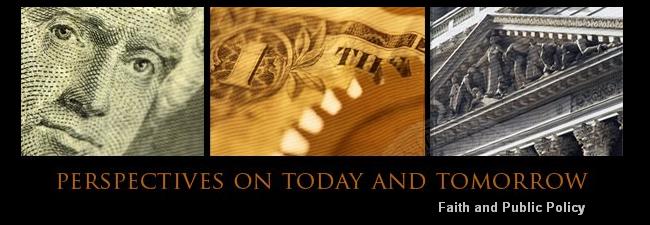“Seebohm Rowntree was the son of wealthy Quaker businessman Joseph Rowntree but was acutely aware of the poverty that surrounded him in late-Victorian York, England. In 1899 he set himself the task of defining a "poverty line" by working out how much it would cost to supply basic food, housing, and clothes. Anyone who couldn't afford to buy those basics -- including a helping of pease pudding with bacon on Sunday -- was below the poverty line. ....
[T]he U.S. definition of poverty is stuck in the 1960s. Had Seebohm Rowntree been working for the U.S. government, perhaps it would now have a poverty standard that was based on the price of pease pudding and that assumed that electricity and indoor plumbing were luxuries. This cannot be right.
Adam Smith put his finger on the problem back in 1776. In The Wealth of Nations, he wrote: "A linen shirt, for example, is, strictly speaking, not a necessity of life. The Greeks and Romans lived, I suppose, very comfortably though they had no linen. But in the present times, through the greater part of Europe, a creditable day-labourer would be ashamed to appear in public without a linen shirt. ..."
Smith's point is not that poverty is relative but that it is a social construction. ....
That is why a new unofficial poverty threshold, published this month by – appropriately -- the Joseph Rowntree Foundation, makes more sense than it at first appears. The standard was set by focus groups working out what was and was not necessary "to participate in society." The results are frugal--there is a budget of £40 ($80) every two years to buy a suit, for instance--but they were always bound to be controversial. The list of essentials includes a self-catering vacation, a cell phone, and enough booze to get drunk twice a month.”
Tim Harford, "Finally, a sensible way to measure poverty", Slate Magazine (26 July 2008).
http://www.slate.com/id/2195897/
Tim Harford is a columnist for the Financial Times and sits on its editorial board. He writes the column that appear in the Financial Times and Slate.
Two approaches are used to define poverty in policy discussions.
In the first approach, most governments and international agencies use an absolute poverty line, that is, what is regarded as the minimum level of income necessary to achieve an adequate standard of living.
In the case of the U.S., it has several poverty lines, depending on the size of the family. For a single adult under the age of 65 the poverty line is now about $30 a day; for a family of four, including two children, it is about $58 a day. About 10 per cent of all U.S. families, numbering somewhat less than 8 million in total, are now classified as living in poverty . There is a long-term downward drift in the percentage of American families and people living in poverty. The percentage of the poor rises during a recession and declines during an expansion. For example, the poverty rate rose the early years of this decade and then declined in recent years, but now may be rising again.
In the case of international agencies two much stricter poverty standards are set, one at a I$ 1 a day and another at I$ 2 a day, both measured in 1985 international dollars, where an “international dollar” is a U.S. dollar adjusted for its purchasing power in different countries. By these criteria, about 1 billion of the earth’s people live below the I$ 1 poverty line and 2.7 billion people live below the I$ 2 poverty line. These are people who live in abject poverty (I$ 1 a day or less) or deep poverty (I$ 2 a day), where few if any of the benefits of modern economic growth have yet to realized and where each day brings the possibility of going without a meal or worse. Although the number of people in abject poverty has been reduced somewhat over the past two decades, the number of people living in deep poverty has increased.
Poverty lines measure poverty in a way that economic growth will reduce measured poverty as the income of people rise.
In a second approach, the European Union and the OECD use relative incomes to measure poverty. Here anyone below a certain percentage of the median income are classified as living in poverty. When poverty is measured in relative terms, income growth will not reduce poverty, for if all incomes were doubled, the poverty rate would remain the same.
Measures of relative poverty are better at measuring inequality than absolute poverty.
To my mind, this poverty line is too generous. Given the high level of incomes in the U.S. it is true to say that already many of the poor today eat better than Henry VIII, are sheltered better than Henry VIII, and can expect to live longer than Henry VIII. I will admit the second monarch of the House of Tudor received a better education than most of the poor do today. Then again, he did not have to contend with the challenge of a public school education, and maybe that's why he received a better education. But just because today's poor have to suffer through a public education, it doesn’t entitle them to get drunk twice a month.



No comments:
Post a Comment